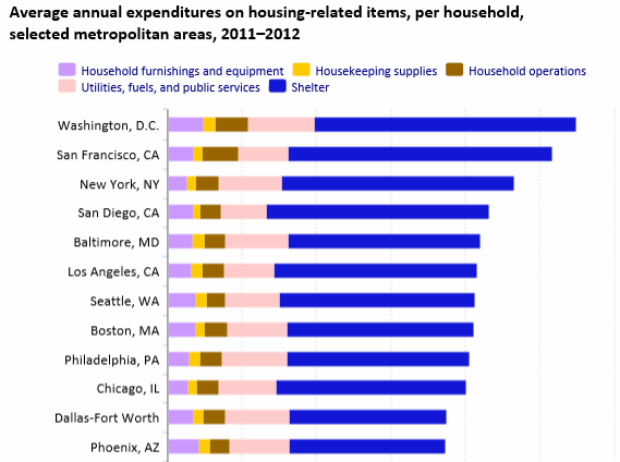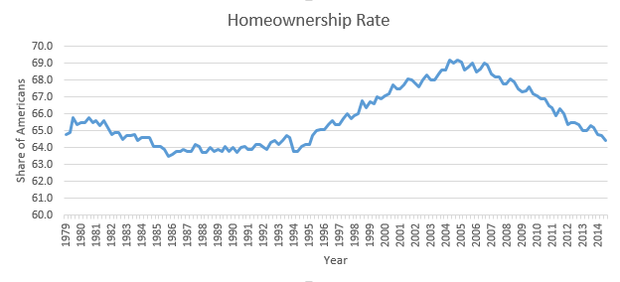
While the rest of the country struggled to recover from the recession, the economy in Texas has been on fire. Thanks to a boom in horizontal drilling and fracking, the state’s oil output has more than doubled over the past three years to 3.18 million barrels per day—a level not seen since 1976.
That’s sparked a surge in construction around the nation’s oil capital, Houston–residential, manufacturing, office, and even the occasional hotel–a development that makes it a poster child for the construction recovery happening around the country.
All that oil has meant plenty of jobs: last year alone, Texas added about 300,000, my colleague Chris Helman reports, and Houston has gained about 630,000 jobs since 2005. The Houston metro area is stepping up to house them, with residential towers rising in the Inner Loop, the downtown neighborhoods bordered by Highway 610. Among the most notable projects is the $147 million, 40-story Market Square Apartments, which will have luxury amenities like a poker room and a sauna, and possibly a grocery store in the retail ground space. Meanwhile, home prices in the neighborhoods close to downtown are quickly rising.
In the first nine months of 2014, the greater Houston metro area welcomed groundbreakings on $25.1 billion worth of new construction projects, a 176% increase over the same period in the prior year, according to Dodge Data & Analytics.
Eight of the 10 biggest new construction projects (in terms of cost to build) are energy and chemicals facilities. The world’s biggest oil and chemicals companies have been rapidly expanding their Houston area plants to take advantage of cheap and plentiful chemical feedstocks like ethane, recovered from booming shale fields like the Eagle Ford. Among the new projects: a $3 billion Chevron CVX -0.56% Phillips ethane cracker in Baytown and a separate $3 billion polyethylene facility at the company’s site in Old Ocean, as well as a $3 billion Exxon Mobil XOM -0.42% project in Baytown and a $1.7 billion Dow Chemical DOW +1.98% project in Freeport.
The most high-profile real estate project at the moment is Exxon Mobil’s $1 billion campus north of Houston, which will house more than 10,000 workers. Started in 2012 (and thus not factored into this year’s construction total), the project sparked rumors that the company would move its corporate headquarters from Irving, Texas—speculation that Exxon’s CEO has refuted.
Thanks to all this activity, Houston jumps two spots to top our 2014 list of the U.S. cities with the most new construction.
“The [nationwide] construction expansion—which has been very hesitant to this point—is becoming more broad-based, which should enable it to become more resilient over the next year,” notes Robert Murray, chief economist and vice president at Dodge Data & Analytics (formerly McGraw Hill Construction).
To compile our list of Building Boom Towns, the folks at Dodge Data sorted through building data for the nation’s Metropolitan Statistical Areas to find the 20 places where the most money has been spent on new construction from the start of 2014 through September. (MSAs, which are delineated by the U.S. Office of Management and Budget, include cities and their surrounding suburbs.)
We looked at the dollar amount of new construction starts, or projects where ground has been broken and work begun, for structures that fall under the categories of single-family home construction, multi-family home construction, office space, retail space, warehouses, healthcare facilities, educational buildings, manufacturing plants and research facilities, among others. We did not include money spent on public works projects– bridges, streets and parks–nor did we include electric utility construction. Dodge Data defines a project’s total value as the cost to build a project at the time that construction starts (this doesn’t include land value or the cost of acquisition).
Note that while construction starts are considered a leading indicator of economic activity, they aren’t a certain representation of what will actually get built, since work could always stall if a developer loses financing or runs into other troubles. Case in point: the B2 modular tower at Atlantic Yards in Brooklyn, once touted as the world’s highest modular residential tower, now stalled amid lawsuits and construction problems.
Across the nation, new construction for the entire country was up 9% in 2013 to $535 billion, and Dodge projects it will climb another 5% to $564 billion in 2014. “The important shift is that non-residential building–which really had not shown any growth in 2012–began to show growth in 2013 and has been even stronger in 2014,” Murray says. “But to clarify, a lot of that has to do with manufacturing.”
Dodge estimates that through the end of 2014, construction starts in the manufacturing sector will be up 57% compared to 2013—and that’s after a 42% jump in the last year over 2012. By 2015, Dodge forecasts, the pace will drop by 16%, though even so the level of manufacturing building (mostly for oil and chemical companies) will be well ahead of historic norms.
Still, residential building remains the biggest chunk of the pie, forecast to account for about $227 billion in 2014’s total construction starts. Single-family residential construction has flat-lined this year, while permits for buildings with five or more units are on the rise, jumping in September to 353,000, up 18.5% over August. Dodge data shows apartment building starts rose 25% nationally from 2012 to 2013 and are forecast to climb another 22% through 2014. Overall, the firm estimates that residential building will grow by 8% this year, slower than in 2013 (up 26%) and 2012 (up 31%).
As the pace slows in residential, commercial is beginning to play a larger role in the construction upturn. This year Dodge forecasts commercial starts will climb 14%, compared to a 22% jump from 2012 to 2013. Financing for construction projects is becoming more available, thanks to easing in bank lending standards as well as the passage of more construction bonds. The total dollar value of starts for hotels and offices is up in 2014, while stores are up just barely. Institutional building – for example, of hospitals and schools – is also on the rise, after a flat 2013 it’s projected to increase by 4% in 2014.
Just behind booming Houston, the greater New York metro area takes the No. 2 slot for most new construction, after topping the list for two years running. A total of $23.3 billion in new construction starts graced the Big Apple in the first nine months of 2014, a 36% increase over the same period the prior year. The largest two are both in healthcare: the Helen L. and Martin S. Kimmel Pavilion Clinical Medical Facility at NYU and The David H. Koch Ambulatory Care Center at New York-Presbyterian Hospital on the Upper East side, both estimated at $800 million. Manhattan is also welcoming a number of new residential projects, many of them targeted at luxury buyers, including the Extell Development’s tall-and-skinny Nordstrom Tower on West 57th Street, which will rise 1,775 feet (one foot shorter than One World Trade Center) and cost about $718 million to build, according to Dodge.
Given the strength of Texas’ economy, perhaps it’s not surprising that three other Lone Star cities make the list of Top 20 Building Boom Towns: Dallas (No. 3), Austin (No. 13), and San Antonio (No. 19)
Dallas, which welcomed $10.8 billion in new construction in 2014’s first nine months, nabs the No. 3 spot, with less than half the new construction seen in Houston or New York. Still, that city is experiencing an increase in projects breaking ground across industries: the $170 million mixed-use development of office, retail, and apartments at Olive and McKinney in downtown Dallas, as well as the new, $150 million six-story tower at the Cook Children’s Medical Center’s Fort Worth campus.
Author: Erin Carlyle – http://www.forbes.com/sites/erincarlyle/2014/11/11/building-boom-towns-metro-areas-with-the-most-new-construction-in-2014/
Come back tomorrow to http://www.AshfordCP.com/blog where Kennesaw’s Ashford Capital Partners’ Managing Partners Matthew Riedemann brings you news you can use.
 Kennesaw’s Ashford Capital Partners’ Managing Partners Matthew Riedemann brings you news you can use.
Kennesaw’s Ashford Capital Partners’ Managing Partners Matthew Riedemann brings you news you can use.

















 (Bureau of Labor Statistics)
(Bureau of Labor Statistics)